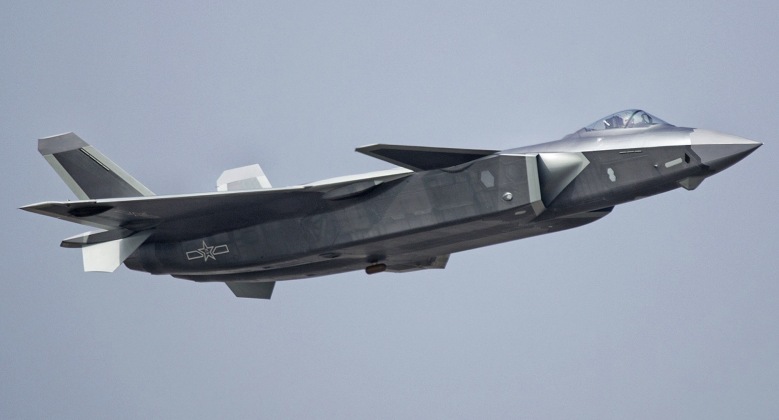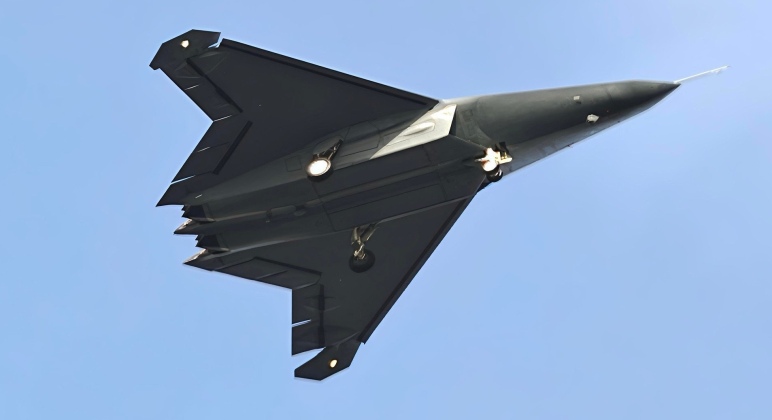News
China Provides First Close Look at its Next Premier Stealth Fighter Already Years Ahead of America’s F-47
New footage has for the first time provided a close look at a sixth generation air superiority fighter being developed by the Shenyang Aircraft Corporation for the Chinese People’s Liberation Army Air Force, which was first seen on December 26, 2024. The aircraft appears to be being developed as a direct successor to the J-20 fifth generation air superiority fighter that is currently in large scale serial production, which first entered service in 2017, with the confirmation of flight testing indicating that it will enter service in the early 2030s. The new images provide a detailed look at the sides of the aircraft, including its thrust vectoring engines optimised for stealth with serrated edges around their exhausts.
It remains uncertain whether the new fighter’s engines are a derivative of the WS-15, which powers enhanced variants of the J-20, or whether it is a clean sheet design. The WS-15 is one of the two most advanced and efficient fighter engines in production today, with a similar weight/thrust ratio to the F135 that powers the American F-35 stealth fighter. With Shenyang’s sixth generation fighter being heavily optimised for stealth, not only does its tailless configuration considerably reduce its radar cross section, but its trapezoidal air intakes with a diverterless supersonic inlet also stands out. The use of swivelling wingtips appears intended to increase directional stability to compensate for the lack of tails.

The new fighter has been reported to carry a particularly large radar for its size, with its outstandingly long diamond-shaped nose appearing to have been designed to accommodate this. For optimal stealth, the aircraft’s canopy is deeply blended into the airframe. The new fighter is estimated to have dimensions approximately equivalent to the J-20, which is a much larger aircraft than the F-35 and the only air superiority fighter with advanced stealth capabilities currently in production anywhere in the world. Although large by fifth generation standards, the fighter is being developed as part of a high-low combination alongside a much heavier and longer ranged sixth generation fighter, which was also unveiled on December 26 and is expected to serve in a complementary role for penetration strikes against more remote targets in the Pacific. This second fighter is expected to be by far the largest in the world.

The intensive flight testing of the two new fighters, and the precedent set by the J-20 program for bringing new aircraft from initial flight testing into frontline service in fractions of the time that it takes the American defence sector, indicates that China’s first sixth generation combat jets will enter service many years before the United States can operationalise a similar aircraft. Indeed, while the U.S. Navy’s F/A-XX sixth generation fighter program has been delayed considerably due to a lack of funding, Chief of Staff of the U.S. Air Force General David Allvin recently confirmed that the service’s F-47 fighter is only expected to make its first flight in 2028, placing it four years behind the Chinese programs. Figures in the American military leadership have long warned that China has been well positioned to begin fielding sixth generation fighters before the United States, while Russia and European states are not expected to develop similarly capable aircraft for the foreseeable future. The unveiling of the new Chinese aircraft has raised considerable questions regarding the future of the F-35 fifth generation program, as the aircraft is increasingly considered at risk of becoming obsolete in the face of a Chinese sixth generation capability.












